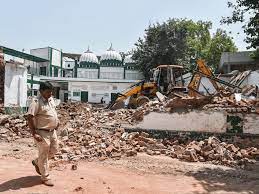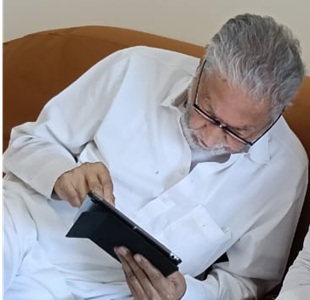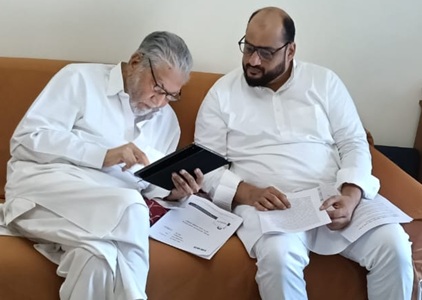By Amit Khanna,
In India you have hundreds of film, literature, music, dance, sports, fashion, investment, technology, science and other festivals in every part of the country. This should be a happy indicator of our rich cultural heritage and our predisposition to the arts. However, most such events are forced gatherings of similar sets of people.
The genesis of these festivals is steeped in history. In post-Independence India, it was essential that a wounded but free nation established its cultural diversity, tradition and its new-found confidence through creative expression. So, Nehru rightly set up bodies like the Sangeet Natak, Lalit Kala and Sahitya Akademis. An International Film Festival, Akashvani Sangeet Sammelan, National Book Fair, etc., were also set up. What should have been the take-off points of various arts, soon lapsed into a well-oiled machine of state patronage. Various awards instituted within the first few years became politicised.
When royal patronage of arts disappeared after the abolition of princely states, music, dance, fine art and literature almost disappeared from public spaces. So it was imperative that the government kick-started their revival. It was good when this was done in the 1950s. However, wherever politics and bureaucracy creep in, a new pecking order based not so much on real talent but political and other (social, economic, regional) considerations come into play.
So, by the end of the 1950s, there emerged a new cultural aristocracy. A group of aficionados, some genuine, some pretentious, who over time would be identified by their omnipresence on various committees and the invitation lists at concerts, festivals and other such events. This newly-minted social class did have some real scholars who did inspiring work in furthering the arts, but largely these were self-styled critics, failed artistes and social climbers.
As a new festival circuit developed initially in New Delhi and then elsewhere, it was a boon for performing artists, filmmakers, painters and authors who got a chance to reach out to a larger audience through these platforms. One has to realise that in the 1950s the only source of income for artistes was All India Radio and a few private mehfils. A chosen few like Pandit Omkar Nath Thakur, Pandit Ravi Shankar, Ustad Ali Akbar Khan and Indrani Rehman got a chance to perform abroad. The Indian Council of Cultural Relations, an organisation under the Ministry of External Affairs, did send some artistes and films overseas, but again the selection was at the whim of some sarkari patron.
The International Film Festival of India did not acquire a proper structure till the 1970s. If you were lucky, your film, based on some foreign critic’s recommendation, was chosen for screening at a foreign film festival like Cannes, Berlin or Venice. There were auditoriums where one could watch art cinema. Film societies, with help from embassies, managed to get some films for private screenings for members in major metros.
Plays were restricted to some cities like Mumbai, Calcutta (now Kolkata) and Delhi. Literature Festivals were things of a distant future. Book launches were confined to a few established authors like Amrita Preetam, Mulk Raj Anand, R.K. Narayan and a few important journalists. Most artistic/cultural activity was limited to a few events where individuals were the catalyst for an art form’s growth.
There were some honourable initiatives like the Swami Haridas Music Festival in Jalandhar or the Dover Lane Music Conference in Calcutta. The Shriram Family (DCM) of Delhi held the annual Shankar Shaad Mushaira in the capital, which was the subcontinent’s most prestigous annual gathering of Urdu poets. They also organised the annual Shankarlal Music Festival and the Bharatiya Kala Kendra Ramleela and concerts.
In the South, the Thyagraja Festival and the Madras Academy concerts are largely privately funded. Soon the Sangeet Sammelan of AIR and three Akademis started holding events in major cities, which were eagerly awaited. The government also started promoting Indian festivals abroad.
In other spheres, drama was largely semi-professional except for regional theatre like in Marathi, Gujarati, Bengali and Punjabi. The first Triennale (Art Exhibition) was held in in 1971, but top artistes had gained popularity among Indian cognoscenti.
It was only in the 1970s that corporates entered the arts circuit and industry groups like the Tatas, Birlas, JK, Jains (of The Times of India) and multi-nationals like ITC became sponsors of cultural events. By then a familiar coterie of cultural interventionists could be seen on the scene. They were organising, judging, participating or just attending event after event. I was for a while a part of this jamboree. Soon from this emerged a new Brahmanical order of culturatti generally dominated by what are now known as left-liberals.
Economic liberalisation and satellite TV changed the paradigm. Today there the hundreds of festivals across disciplines. Private groups professionally organise most of these. There are expensive delegate fees for such events. So you have at least a dozen film festivals (MAMI in Mumbai, Kolkata Film Festival, Kerala Film Festival in Thiruvananthapuram and IFFI in Goa are major ones) from Guwahati to Dharamshala, Lucknow to Bengaluru.
There are a dozen litfests, led by the Jaipur Literary Festival, and events in Mumbai, Delhi and other state capitals. Several music and dance festivals, and theatre festivals like the one organised by the National School of Drama in Delhi, and those organised by the Mahindra Group, Aditya Birla Group, IPTA, Prithvi, Nandikar and others. And hundreds of smaller events.
Museums and art galleries all over hold regular exhibitions and seminars. All sponsored and many of them money-making. There are professional event mangers, PR companies and tie-ups with broadcasters. Besides, every media group, TV channel and several chambers of commerce and industry hold hundreds of events, award shows and conclaves. We are spoilt for choice.
What has not changed in 70 years is the list of 500-odd people who are the usual speakers, participants, critics and guests at these events. I am tired of hearing the same people turning up at such events with the regularity of homing pigeons. This tired lot says the same things, loaded with their ideology and opinions (often redundant) month after month, year after year. The same panelists (including me), the same chief guests and often the same applause-junky, name-dropping professional quote hangers. The show goes on.
(Amit Khanna is a writer, filmmaker and media guru. The views expressed are personal. He can be contacted at amitfilm@gmail.com)
—IANS






0 Comments